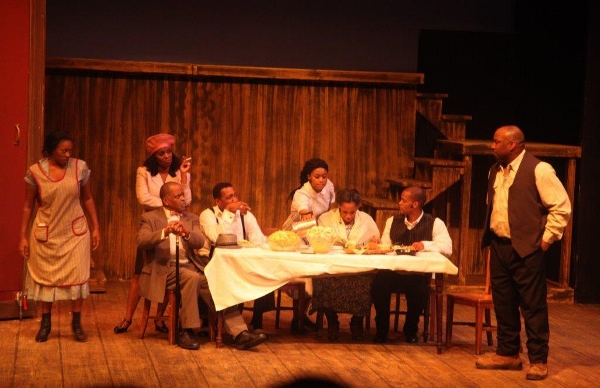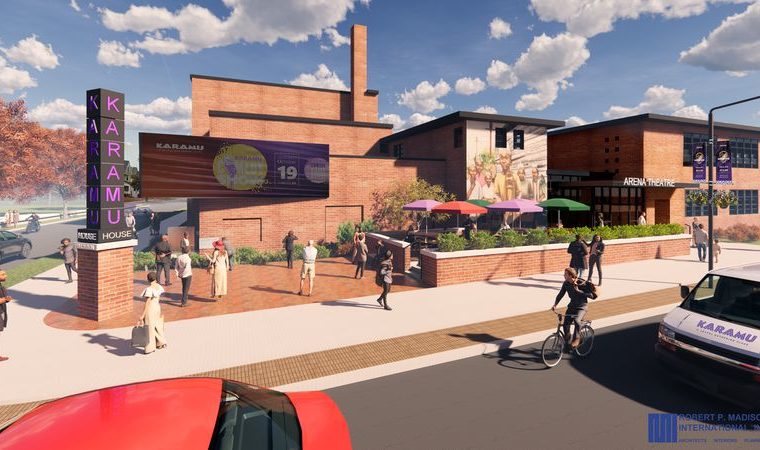Table Of Content

Karamu is a Swahili expression meaning “places of entertainment or fasting at the center of community.” The Jelliffes realized that the United States was not keeping its promise of the Constitution by not helping minorities. The Jelliffes believed that people of color should have ways of expressing their basic cultural talents. Originally, Karamu opened at 2239 East 38th Street through the Neighborhood Association in 1915. After the fire burned Karamu House down in 1939, it was rebuilt in 1949 at East 89th and Quincy, where it remains to this day.
Karamu Arts Classes
KARAMU HOUSE is a neighborhood settlement that became nationally known for its dedication to interracial theater and the arts. 38th St. in 1915 by 2 young white social workers, ROWENA and RUSSELL JELLIFFE, with the support of the Second Presbyterian Church, but it soon was popularly known as the Playhouse Settlement. As an entry into community life, the Jelliffes began producing plays with interracial casts in 1917. Their affiliation with the church ended in 1919, when they incorporated as the Neighborhood Assn.
TONY F. SIAS
Known as the last remaining theatre in Los Angeles dedicated to the Black community, the Lincoln Theatre began its legacy in 1927 with live performances, movie screenings, and vaudeville for 2,100 patrons. It was often revered as the “West Coast Apollo” after Harlem’s Apollo Theater, with the two often hosting the same or similar acts. The renowned Apollo Theater did not start off as a creative space for Black Americans. First owned by Sidney Cohen and then obtained by Benjamin Hurtig and Harry Seamon in 1914, the theatre was originally home to burlesque shows under the name Hurtig and Seamon’s New Burlesque Theater. Similar to many public and private spaces in America, Black people were denied entry to the theatre. To celebrate the theatres that paved the way for Black creatives, Playbill shares the history of some of the country’s iconic Black theatres that contributed towards propelling diverse and equitable storytelling to the forefront.
Cleveland's Newest Asian-Owned Restaurants Await

With the rise of Black Nationalism in the 1970s, the theatre decided to focus its storytelling around the Black experience in America. It was later unsuccessful in its attempt to become a professional acting company. The cultural beacon of Black theatre, the African Grove Theatre’s opening in 1821 birthed a space of creative refuge in the midst of slavery and systemic oppression. The New York City theatre, founded by West Indies native and playwright William Alexander Brown, opened six years before the final abolition of slavery in New York State and is considered the first Black theatre in the United States. The Playhouse Settlement quickly became a magnet for some of the best African-American artists of the day.
By using this site, you consent to our User Agreement and agree that your clicks, interactions, and personal information may be collected, recorded, and/or stored by us and social media and other third-party partners in accordance with our Privacy Policy. Hughes – one of the most popular writers of the 20th century -- grew up in the Central neighborhood of Cleveland and taught art classes at Karamu while attending Central High School. Recognized as the oldest African-American performing arts institution in the United States, it has served as an incubator for some of the country’s best-known Black artists since it first opened its doors in 1917. From October 2003 to March 2016, Terrence Spivey served as Karamu's artistic director.[17] Tony F. Sias currently serves as CEO + President, Aseelah Shareef serves as COO + Vice President. It’s the most awesome place in the world and black community in Cleveland, lot’s of stars come from here, Ruby Dee is one of the persons, she even met her husband there whom also is famous…Ossie Davis.
The Jelliffes were dreamers and believed that the arts were very important to American life, and interracial art was imperative. Most importantly, the Jelliffes highly prized the principle of “democracy in action.” Karamu was idealized in this way by performing theatrical productions by both Black people and white people. The arts have long been used as a vehicle to address complex and uncomfortable topics, including racial diversity and inclusion.
Aspiring and seasoned adult actors are welcomed to join acting workshop exploring objectives, tactics and script analysis. Adults can also train in tap classes free thanks to funding from Cleveland Clinic. The Lincoln Theatre would feature performances from the best Black performers for over 30 years, notably Lionel Hampton, Duke Ellington, the Nat King Cole Trio, and Billie Holiday. The theatre was acquired by Bishop Samuel Crouch in 1961 with goals of expanding his congregation with a new place to worship. Renamed Crouch Temple, it operated until the 1970s when the building was converted into a mosque for the Black Muslim community.

“We want Karamu to [continue to] be a social hub, a gathering place for our increasingly diverse audiences from across the region,” says Shareef. This weekend, the theater will premiere a production of “Red Summer.” Conceived by Sias and written by Cleveland playwright Nina Domingue, the play examines the hardships and racial terror faced by African Americans during a summer of racial violence in 1919. “We used theater as a vehicle -- not only to entertain audiences but to educate audiences about the Black experience -- and to activate our audiences toward change,” Sias said. “Theater was a means to an end, people were learning in, and through, the arts as a result of the work we were doing in the virtual space.
Program Dates:
How Karamu House Went From Deficit to Durability - American Theatre
How Karamu House Went From Deficit to Durability.
Posted: Mon, 30 Sep 2019 07:00:00 GMT [source]
Tucked away in the Fairfax neighborhood just east of Downtown Cleveland and near the Cleveland Clinic is one of Cleveland’s historic cultural institutions, Karamu House and Theatre. It’s known as the oldest Black theatre company in the U.S. and has been an incubator for some of the country's most well-known Black artists since its opening in 1917. Perhaps most notably, playwright and poet Langston Hughes saw a number of his plays debut here.
Karamu House receives $75K grant to restore residence of poet and playwright Langston Hughes - freshwatercleveland
Karamu House receives $75K grant to restore residence of poet and playwright Langston Hughes.
Posted: Wed, 21 Jul 2021 07:00:00 GMT [source]
A place where people of diverse backgrounds could come together to master their craft, and train using the arts as a vehicle for social change and personal growth. The poet, writer and playwright wrote his first play at Karamu – “The Golden Piece” in 1921 – and went on to write and debut several other works on its stage, including a show commissioned by Karamu in 1961. If you are interested in financial assistance or a scholarship, please notify with your student’s full name and program. Students who have been a part of the program for at least 3 sessions with exceptional attendance and behavior are prioritized for our merit scholarships, this is separate from the financial aid process. Founders Stanley E. Williams and Quentin Easter opened the theatre as a way to create opportunities for Black creatives and performers.
This drama concerned itself about labor fights on the New Orleans wharves and contained ten tension-filled scenes that dealt with the amalgamation of Black and white people to prevent a lynching. Some audience members found the play profound, while others were astonished and emotionally outraged. Stevedore is a further example of the theme of Black people fighting the injustice they experienced, and this is expressed through Black American art. The arts are a proven economic engine for development and inclusive job opportunities. That’s why Cleveland Clinic, Karamu House and Fairfax Renaissance Development Corporation (FRDC) have partnered in projects along Quincy Avenue and the Opportunity Corridor.Karamu has been an arts anchor for the Fairfax neighborhood since its inception.
The pair rebranded the venue to focus on variety shows and wanted to reach the growing Black community in Harlem. From New York City's Apollo Theater to Los Angeles' Lorraine Hansberry Theatre, celebrate a few of the spaces across the country that fostered Black art and culture in the midst of adversity. "It’s like opening a new present every day. We really never know what we’re going to get. It’s exciting to continue to learn for our own personal knowledge history that happened in our backyard, " expressed Churby Llanos. The theater is undergoing a $14.5 million renovation that includes a brand new streetscape, a full-service bistro, along with a patio and enclosed outdoor performance stage, in addition to major renovations in the arena theater, lobby, and dressing rooms. Established in 1915, Karamu House is the oldest Black producing theater in the United States.
The war years were hard on Karamu, but in the 1950s with the direction of Benno Frank and Reuben Silver, it became known as one of the finest amateur groups in the country. This demonstrates that despite terrible adversity, people can unite and be a force for social change and promote interracial art. The Jelliffes wanted to create an environment where people of different races, religions and socio-economic backgrounds could come together to find common ground through the arts.

No comments:
Post a Comment